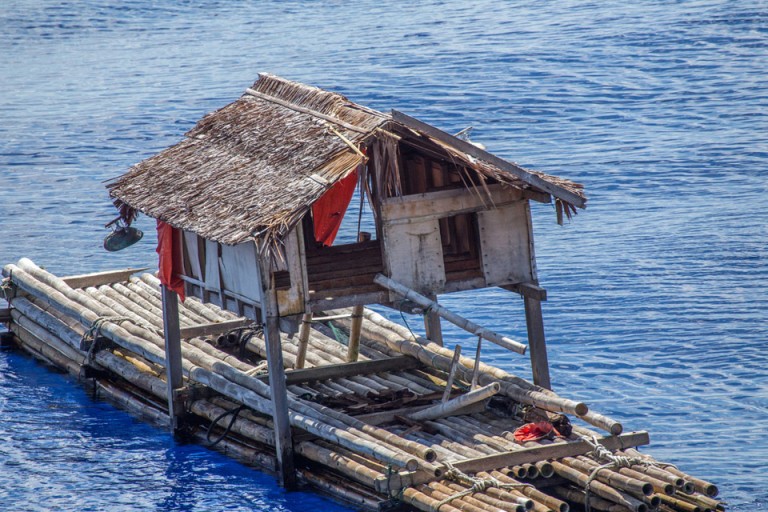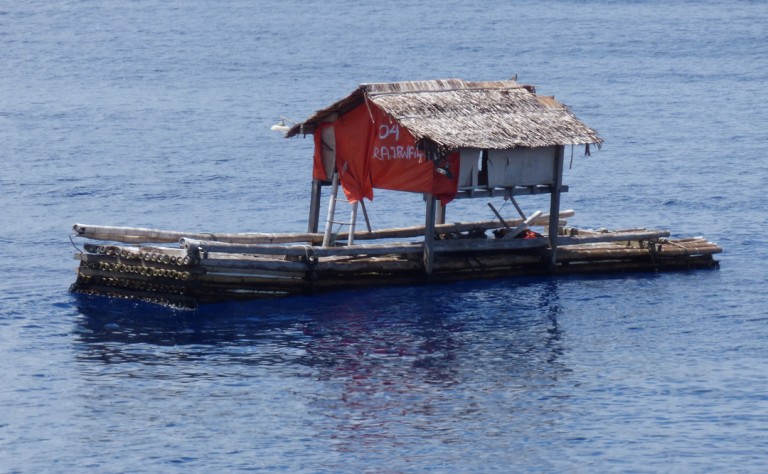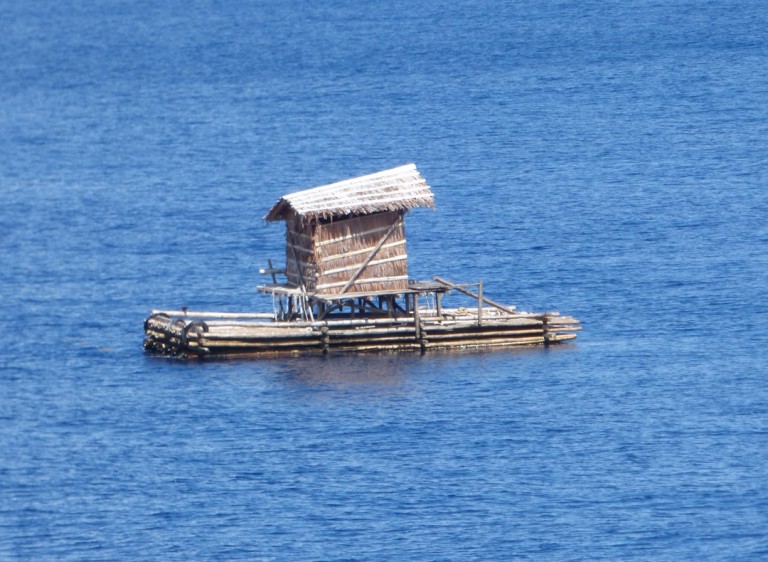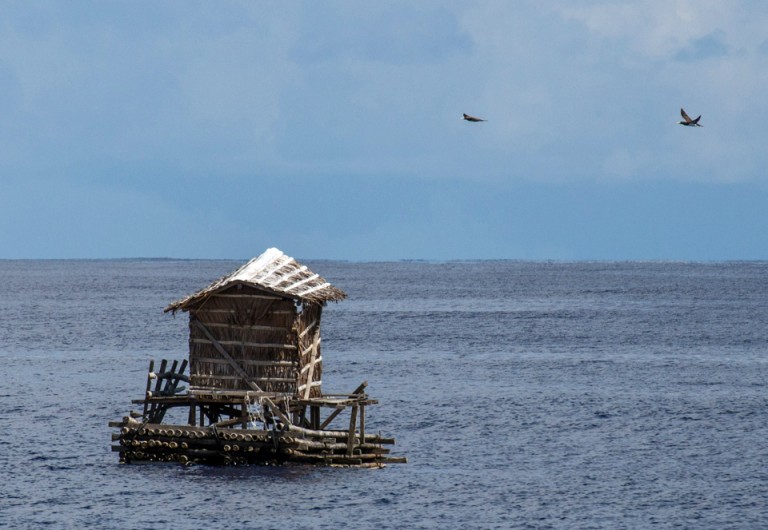Odd things turn up in the open ocean. Research vessel Falkor is hundreds of miles from any island, let alone continent, with not a speck of land on the horizon, and all of the sudden a floating house appears. As the science and ship’s crew gaze at the wooden hut on a well-built, floating bamboo platform, a number of questions come to mind. Mainly, what in the world is this doing out here? Followed by, is anyone onboard? The second question seems rather unlikely as the sight and sound of Falkor would be enough to rouse someone, but just to make sure, the Captain blasts the ship’s horn. No one appears.

Ahead, a second house appears, and we repeat the inspection process. Again, no one is home. This large floating unit is even more obvious as we can see right through it. Some numbers and lettering appear on the house, leading me to think, “FAD!” Not as in a trend, although that does come into the story in a moment, but as a “Fish Aggregating Device”. Any floating material at sea draws fish to it. These houses undoubtedly have lots of fish underneath them. I was about to suggest that Chief Bosun Mick Utley put out a line, when he shows up on the bridge and lets us know that although he hooked two mahimahi as we passed by, they did not make it up on deck.

A little research and a look at a colleague’s blog at ISSF, International Sustainable Seafood Foundation’s website, brings a possible answer to the floating houses. They are the same design seen in some coastal areas and are indeed FADs. FADs come in a variety of shapes and sizes, and are important to tuna and other targeted ocean fisheries. To quote from a 2012 blog from Dave Itano (What Does a FAD Look Like?), “Tuna fishing in the WCPO landed 2.4 million metric tonnes of fish in 2010 representing 60% of global tuna landings and 84% of Pacific landings. The majority of this was caught in association with FADs.”
FADs typically have ropes or other objects dangling below to make them more attractive to fish. The commercial ones have an electronic buoy attached that transmits the FAD’s GPS coordinates to fishing vessels that come and periodically harvest from them. House FADs sometimes have a person living aboard to call in to the company when a school of tuna is sighted underneath (Itano).
While very helpful to catch fish, numerous concerns relate to FADs. If the targeted species is already under fishing pressure, then the intensified angling success using the FADs will accelerate the species decline. Non-target animals of concern, like turtles or other threatened species may also congregate by FADs and be fished out as bycatch. Additionally, FADs may aggregate a particular size or age class of the target species that may not be the best choice for the fishery. Despite these concerns, FADs can be used to enhance a fish stock if carefully regulated. Part of the current problem is that although use of FADs is a long tradition, the number of FADs deployed is rising faster than regulation or study can take place on their effects on fish populations. FADs have become the fad.

As Falkor leaves the floating FAD houses behind, we will never know if these particular FADs are functioning units, or, as is more likely, floating debris, torn from a coastal mooring and set adrift across the ocean. In the water we see evidence of other accumulated materials such as a fluorescent light bulb, floating plastic bottles, fishing floats, and other trash, mostly plastic. A sobering reminder that our human impacts can reach even remote stretches of the Pacific. These houses may have drifted from the Philippines or other Pacific areas. For the moment, they are rogue FADs, hopefully acting for conservation, and building fish stocks rather than targeting them for a harvest.

For more information on FADs, check out the links below.
What Does a FAD Look Like? Dave Itano. ISSF, International Sustainable Seafood Foundation. 02 May 2012.
Use of ‘fish aggregating devices’ could be unsustainable, Scientists are beginning to assess impact on fisheries. Daniel Cressey. Nature. 28 January 2014.
Police burn a fish aggregating device in Palau. ABC News. 02 September 2014.
For more information on plastic debris in the ocean, see the links below:
Plastic Oceans: http://www.plasticoceans.net/
National Geographic: http://news.nationalgeographic.com/news/2014/07/140715-ocean-plastic-debris-trash-pacific-garbage-patch/
New York Times: http://www.nytimes.com/2014/08/26/opinion/choking-the-oceans-with-plastic.html
